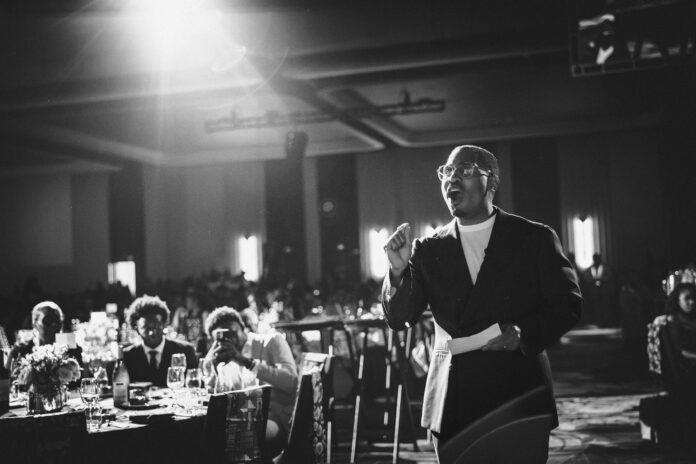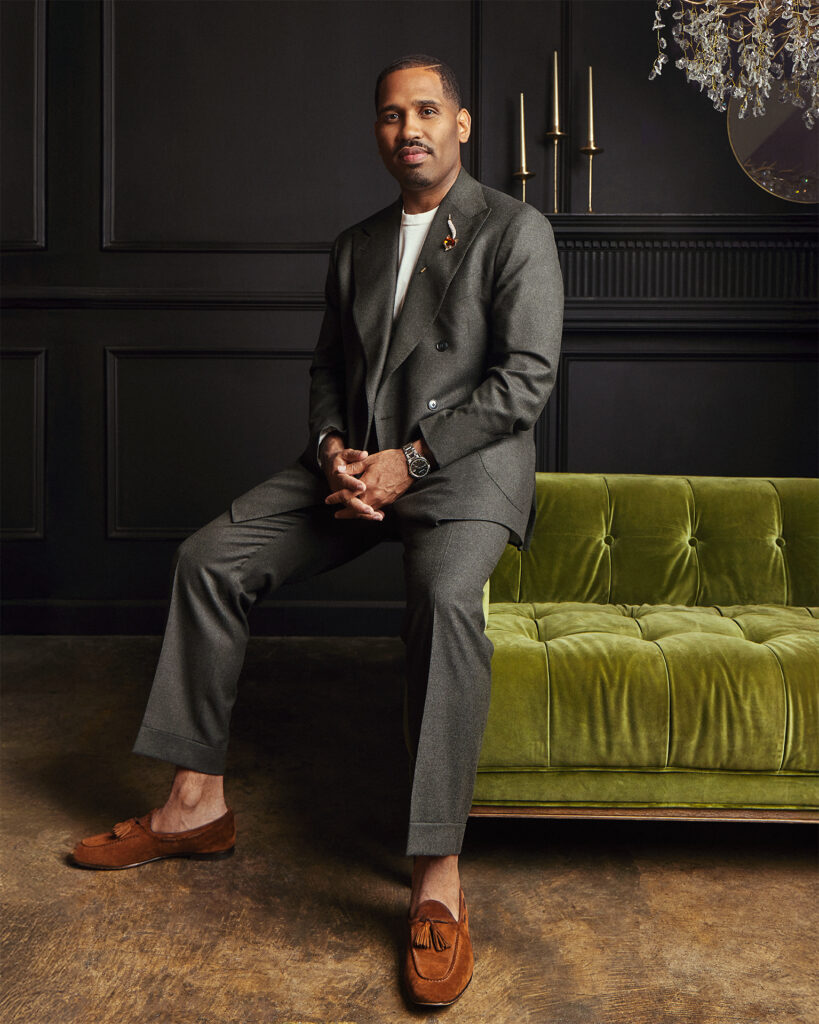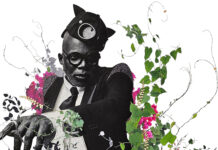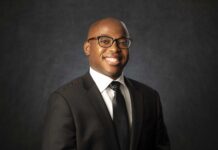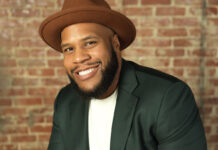Samaad Wes Keys, Ph.D., has built a career at the intersection of strategy, equity, and storytelling—shaping national conversations inside major institutions while also charting his own independent ventures. As a leader whose journey spans teaching, philanthropy, and thought leadership, the Morehouse College alumnus with a doctorate in higher education brings a unique lens to the urgent challenges and opportunities facing higher education today. In this conversation with The Network Journal, he reflects on the balance between institutional influence and personal mission, the evolving definition of equity, and the role of legacy in shaping the next generation of leaders.
Your career has placed you in key roles where strategy and vision drive impact. How do you balance being a strategist in major institutions like the Gates Foundation while also building your own independent ventures?
Keys: For me, being a strategist is about weaving together my life experiences, historical context, data, and the realities of the present moment to create solutions. Strategy is creativity at work. At the Gates Foundation, I get to exercise that creativity at scale. Before entering this field, I studied music for much of my life. I once believed singing was my way of moving people. Now, I see strategy as another form of artistry—an avenue to inspire and create impact.
Balancing that with my independent ventures means recognizing the limits of large institutions. There are areas where I can influence change and others where the scope doesn’t allow it. My ventures fill those gaps, giving me space to create in ways that bring energy and authenticity. They allow me to embrace dimensions of my identity and passions that may not always align neatly with institutional priorities. At the same time, the two are not separate. I intentionally weave them together. For instance, at the Gates Foundation, ensuring HBCUs (Historically Black Colleges and Universities) have a seat at the table is non-negotiable for me as an HBCU alum. In that way, my ventures and institutional work reflect and reinforce my broader commitment to equity and impact.
What does effective leadership look like to you in the current climate of higher education, where equity and innovation are often competing priorities?
Keys: I don’t see equity and innovation as competing. I see them as inseparable. Equity requires differentiated approaches so that every student succeeds. Innovation is the tailoring; equity is the goal. When I was a teacher, we used differentiated instruction to meet students where they were. The lesson stayed the same, but the delivery changed so every student could access it. That’’s how I view the relationship between equity and innovation: they are two sides of the same coin. Effective leadership today requires courage to disrupt outdated models, vision to design something better, and humility to admit that the one-size-fits-all approach never truly worked. Serving Black, Latino, Indigenous, low-income, and first-generation students means being bold enough to innovate in ways that respond directly to their realities.
Where do you see the most urgent gaps in higher education today?
Keys: The most pressing gap isn’t access—it’s value. We’ve made progress in enrolling more students, but too many don’t finish. And even when they do, the degree doesn’t always deliver the economic or social mobility they expected. I know this firsthand. My mother raised us on public assistance, earning about $12,000 a year. When I graduated from Morehouse and became a teacher, my $36,000 salary tripled our household income. For me, that was transformative. But compared to peers from more affluent families, that same salary would not have had the same impact. That gap in value is still with us today.
I also see challenges tied to automation and technology. If higher education doesn’t adapt, students from underrepresented backgrounds—the very ones who could benefit most—risk being left behind. Finally, students need more than access to classrooms; they need ecosystems of support. Networks, communities, and mentors who help them persist and thrive during college and beyond are critical. Until students consistently graduate with credentials that transform their lives, higher education will remain short of its promise.
How can philanthropy move beyond funding to truly reshape systems and sustain long-term change in academia?
Keys: Philanthropy often funds at scale—big initiatives, networks, or intermediaries—while smaller, tuition-dependent institutions struggle to plan for long-term transformation. This creates a gap. The shift philanthropy must make is toward investing not just in tools and programs, but in people. A grant doesn’t create transformation—people do. Leaders, faculty, and staff must have the skills, vision, and capacity to drive change. Without that, we’re left with resources no one is equipped to use. True systems change means prioritizing leadership development and human capacity alongside program design. When we invest in people, institutions are better positioned to keep evolving long after the grant cycle ends.
Your podcast, A Sip With Samaad, is a platform for conversations beyond policy papers and boardrooms. What is the power of storytelling and dialogue in driving transformation?
Keys: I’ve always believed storytelling is strategy. Data tells us what’s happening, but stories tell us why it matters. When students or leaders share their lived experiences, it creates urgency and empathy in ways reports never could. Dialogue takes it further. It allows for vulnerability, complexity, and unscripted truth. On my podcast, there’s space to wrestle with challenges in real time. That freedom fuels transformation by shifting conversations from surface solutions to deeper, systemic change. For me, A Sip With Samaad is both personal and professional. It documents stories that might otherwise go unheard, while reminding us that transformation starts with people, not policies.
How has hosting a podcast expanded, perhaps reshaped, your role as a thought leader?
Keys: The podcast has challenged me to show up differently. In my professional work, I’m the strategist—focused on systems, outcomes, and frameworks. On the podcast, I show up as a Black man, a husband, a father, and a son who has known grief. That vulnerability has reshaped how I view thought leadership. It’s not just about polished solutions; it’s about authenticity. Sharing personal stories—about parenthood through surrogacy, loss, or navigating multiple identities—connects with people in ways that policy talk never could. It’s also reminded me that influence doesn’t just happen in boardrooms; it happens in intimate conversations where people feel truly seen and heard.
What academic opportunities or leadership roles are you hoping to step into that align with your expertise and passion?
Keys: I see myself leading—bringing together vision, strategy, and execution to strengthen institutions and expand opportunity. Whether in philanthropy, nonprofits, or within higher education itself, I want to be closer to implementation, where ideas become practice and students experience real change. I’m excited about opportunities that combine strategy with storytelling, creating environments where students not only enroll but thrive and graduate with life-changing credentials. Ultimately, I want to lead in ways that align with both my expertise and my calling to advance equity.
What does building legacy mean to you at this stage of your career, and how do you hope to inspire the next generation of leaders?
Keys: Legacy, for me, is about permanence. Titles and accolades fade, but systems, pathways, and communities strengthened through your leadership endure. My own journey—as a first-generation student from a low-income household—reminds me that thriving isn’t automatic; it requires support and opportunity. I want to leave behind a playbook for others who come from similar beginnings, proof that their starting point doesn’t define their finish line. Inspiring the next generation means being transparent about the journey: leadership isn’t perfection, it’s persistence. If future leaders feel more prepared and emboldened because of the paths we’ve cleared, that’s a legacy worth leaving.
If you could leave The Network Journal’s audience with one call to action to support equity and transformation in higher education, what would it be?
Keys: Don’t settle for surface change. Higher education is at a crossroads, and incremental tweaks aren’t enough. We need bold action—asking who’s still excluded, whose voices are missing, and what systemic barriers remain. True transformation requires courage to rethink outdated models and commitment to equity that reaches beyond access to ensure completion and mobility. This responsibility belongs not just to colleges and universities, but also to philanthropies, policymakers, employers, and communities. We all have a role to play in ensuring students not only get in, but also persist, graduate, and thrive. The future of higher education—and of society—depends on our willingness to demand transformation, not just adjustments around the edges.

